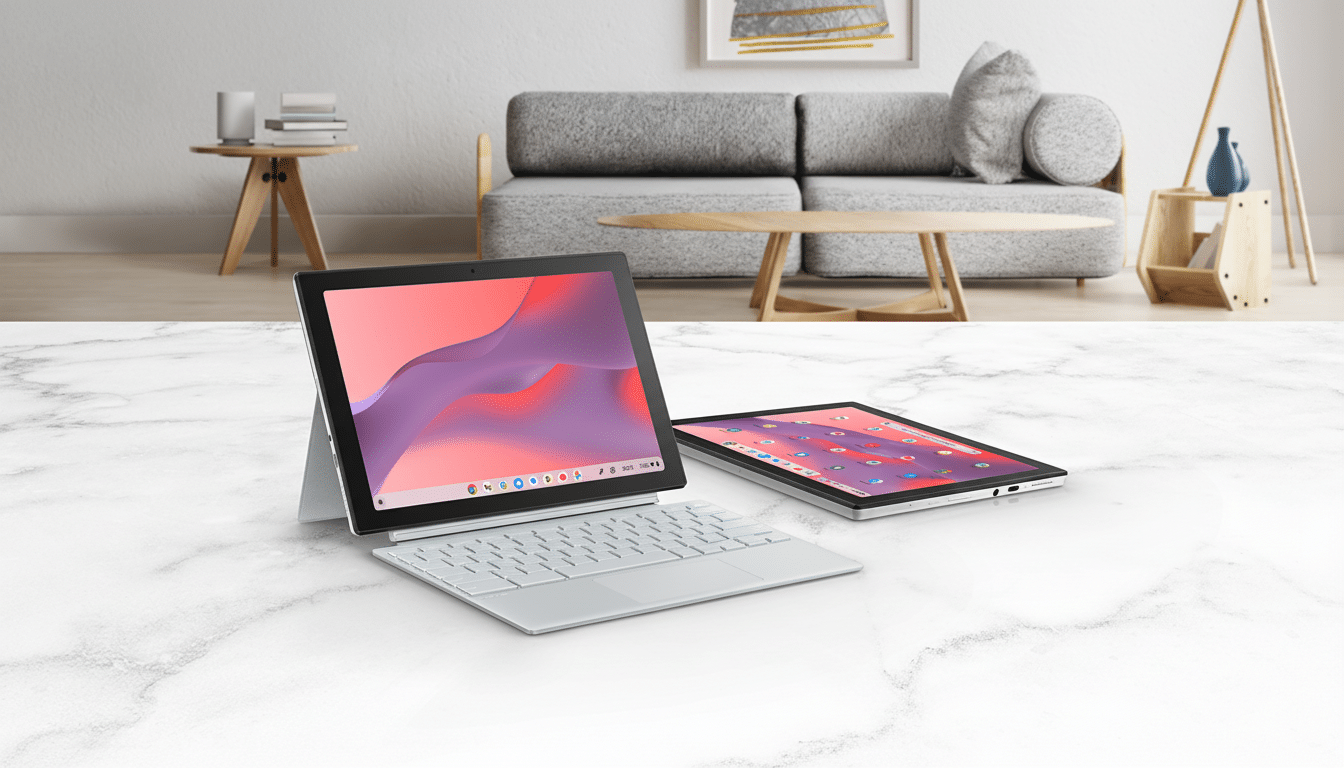A 2-in-1 Chromebook is almost never available this cheap with a detachable keyboard, but you can get the Asus Chromebook CM30 for only $160 now, which is about a whopping 51% off its original MSRP of $329.99. It’s a nifty sub-$200 purchase for students, jet-setters, and anyone who wants a light laptop that easily flips to tablet mode with a minimum of fuss.
What $160 buys you with the Asus Chromebook CM30
Combined with the full-size, magnetically attached keyboard (both for typing and as a cover when it’s not in use), you can snap the tablet onto its keyboard while getting ready to work, then remove it just as easily when you want to browse on your tablet. At 10.5 inches, that resolution is about 216 pixels per inch — sharp enough to make documents and streaming look fine, and pen input won’t show visible pixelation at viewing distances anyway.
- What $160 buys you with the Asus Chromebook CM30
- Performance and everyday use for school and travel
- Open-box caveat explained and what to check before you buy
- How it compares with other detachable Chromebooks today
- Security features and long-term ChromeOS update support
- Who this 2-in-1 Chromebook is best suited for

Under the hood, a MediaTek Kompanio 520 is used in conjunction with 8GB of RAM and 128GB of eMMC storage. For a ChromeOS laptop, that configuration is optimized for everyday general-use work: dozens of browser tabs open, video calls, note-taking, and Android apps from Google Play. Wi‑Fi 6 and Bluetooth 5.3 handle modern wireless connections, with dual 5MP cameras on the front and rear to enable speedy scans or meetings.
The bundle is unusually full for the price: you get the detachable keyboard, a stylus for sketching and signatures, and a stand cover that serves as a kickstand to prop up the tablet when you’re watching it on desks or airplane trays.
Performance and everyday use for school and travel
ChromeOS is all about getting the most out of efficient hardware, and the Kompanio 520 platform has been designed for ultra-responsiveness at low power. Anticipate speedy boot times, nimble browsing through web apps such as Google Docs, Sheets, and Canva, and solid performance for messaging and productivity suites. The 8GB of memory is a kind of unheralded hero here — more headroom for multitasking than you tend to get at this price.
Streaming and casual gaming through Android titles or the cloud are easily within scope, though this isn’t aimed at the real heavy lifting of local gaming or video editing. For offline tasks, the 128GB of space is abundant for a Chromebook; you’re able to pin files in Google Drive and still have space left over for large PDFs, slide decks, and a music/video library.
Battery life will depend on workload and brightness, but 10-inch ChromeOS tablets can often reach all-day use between mixed browsing and streaming. The efficient ARM-based chip and lean OS help stretch time away from an outlet.
Open-box caveat explained and what to check before you buy
This model is described as open-box, indicating that the item was never used and remains new, though its original packaging may have been unwrapped for display, inspection, or to process a non-defective return. It’s not refurbished, and it should come with the original accessories — keyboard, stylus, and cover — though you may want to verify contents before you buy.
As with any open-box purchase, be sure to confirm the return window and warranty. Many retailers continue to honor traditional return policies and specify warranty support, but documentation will vary. A fast power-on check to verify pixel integrity, keyboard connection reliability, and stylus performance is a good first step for the day of delivery.

How it compares with other detachable Chromebooks today
Detachable Chromebooks like Lenovo’s Duet series and HP’s Chromebook x2 11 have popularized the “tablet-first, keyboard-when-necessary” mindset, but equivalent bundles usually fall in the range of $230 through $400 depending on specs and discounts. It’s rare to see an 8GB/128GB configuration with pen input around $160, which is competitive even with closeout pricing.
The key differentiators for budget shoppers are RAM and storage. Many budget models still come with 4GB of system memory and a 64GB eMMC drive, which can feel cramped, especially as the number of web apps or tabs you have open continues to increase. A higher baseline for the CM30 also gives it more runway, avoiding some of the slowdowns that tend to make cheap laptops, well… feel cheap.
Security features and long-term ChromeOS update support
ChromeOS already features verified boot, sandboxing, and automatic updates to minimize maintenance — a major reason schools and families are attracted to Chromebooks. Google has also pushed back update schedules, giving, on certain newer models, up to 10 years of automatic updates “based on when the device first became available,” depending on platform eligibility. That longer runway enhances value and device longevity.
Managed profiles for work or school and Family Link services on supervised devices can help maintain safety, and built-in encryption protects your files locally. If you deal with particularly sensitive documents, this pile of security is even more important than raw horsepower.
Who this 2-in-1 Chromebook is best suited for
If you’re entrenched in Google’s ecosystem or just want an easy, low-maintenance computer, this 2-in-1 is just right.
For students, there’s a real keyboard and note-taking slate in one (on which to tap out essays) without lugging around an unwieldy device; for frequent flyers, there’s a true tablet with a keyboard that works in your lap; and for casual users, it offers sit-back-on-the-couch simplification for email, streaming, and light productivity.
Priced at around $160 and coming bundled with a keyboard, pen, and stand cover in the box, the Asus Chromebook CM30 is an excellent first Chromebook, a solid travel companion, or a budget secondary computer for home.

